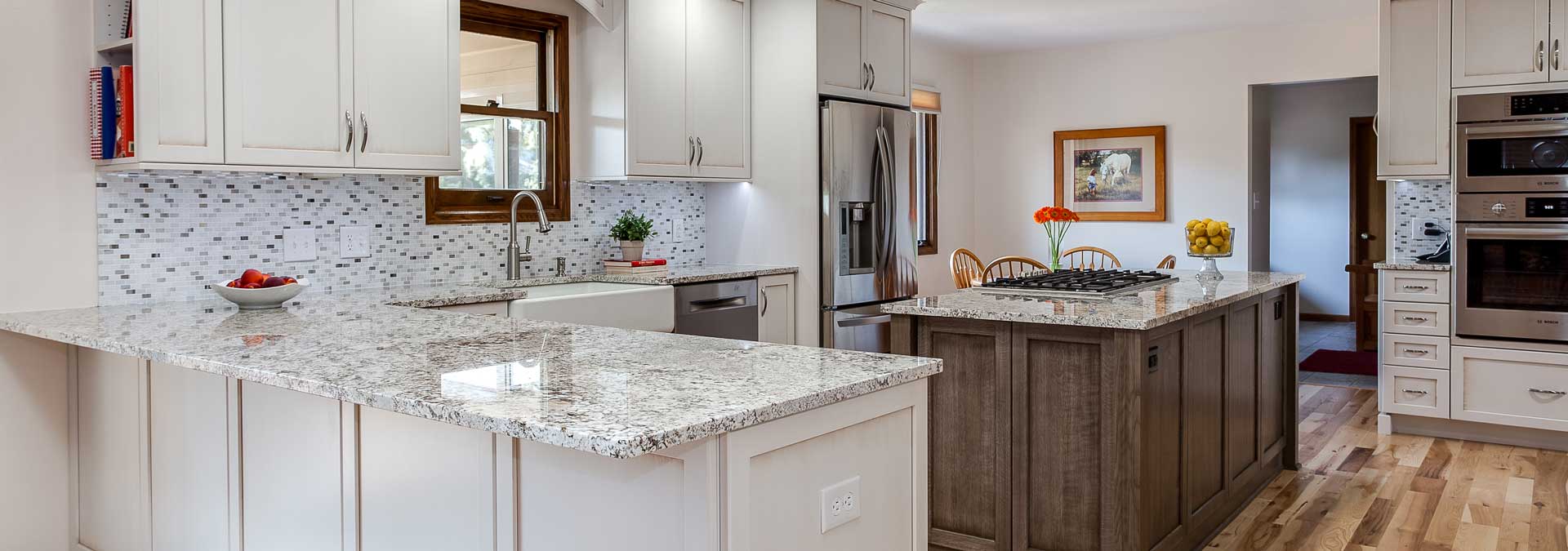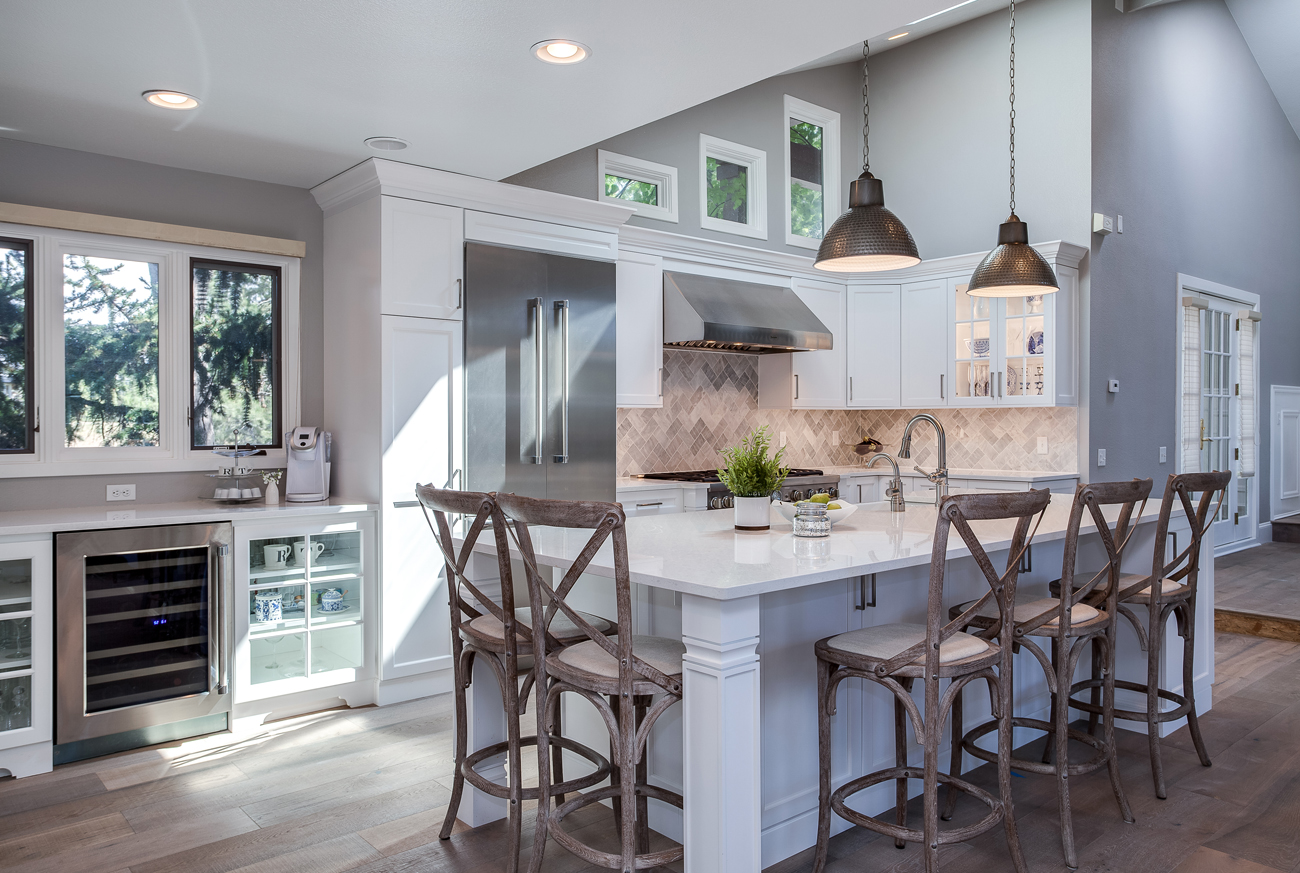
Lighting can make or break how a new kitchen looks, feels and functions.
Good lighting makes a new kitchen more enjoyable, and bad lighting does just the opposite. It is equally as important as cabinets, countertops, appliances, sinks and other fixtures.
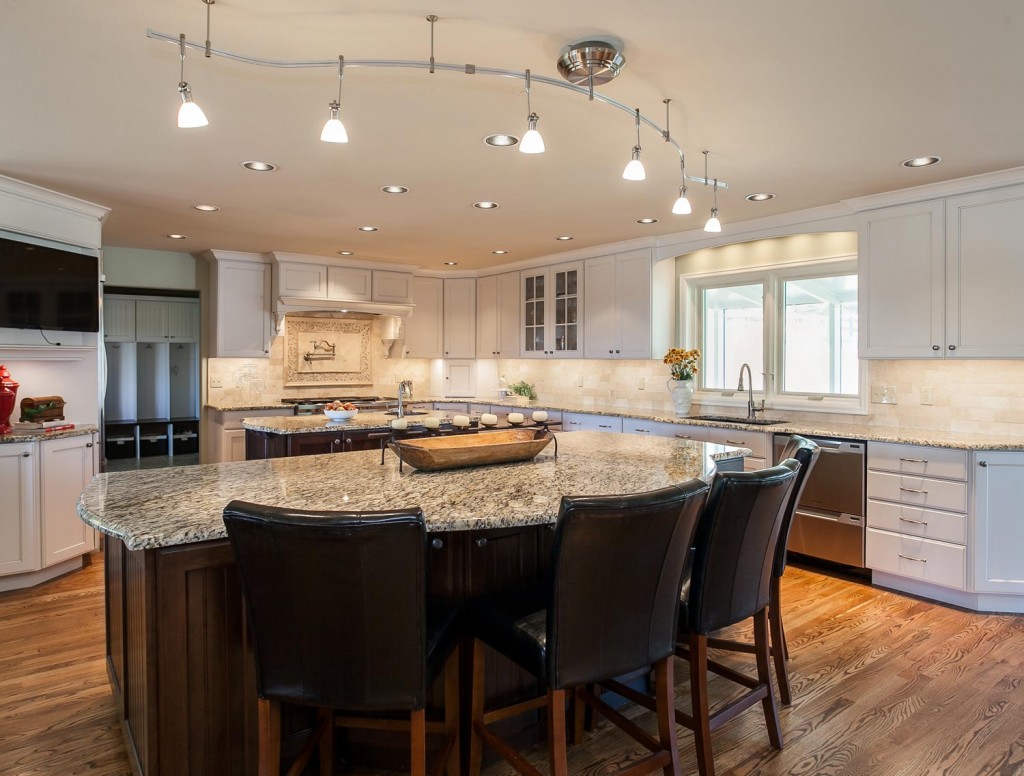
Too often, however, homeowners in Denver treat lighting as an afterthought or leave the decision to an installer who typically selects whatever system is the easiest to install and/or the least costly. Think about this: Would you have a cleaning service select furniture for your home based on how easy it is to clean and how little the furniture might cost? If the answer is no, then why would you have an outside contractor who may not understand your needs, goals and desires, select lighting fixtures for your dream kitchen?
Simply placing flush-mounted or recessed fixtures in the center of your kitchen ceiling can provide functional light, but that type of lighting may do little to beautify the space, create a mood, evoke favorable emotional responses or provide the necessary amount of light that makes meal preparation, reading, doing homework, composing emails or for other common tasks that are now performed in the kitchen easier. Developing an effective lighting plan for a dream kitchen in Colorado begins with understanding what areas of the kitchen need which type of lighting.
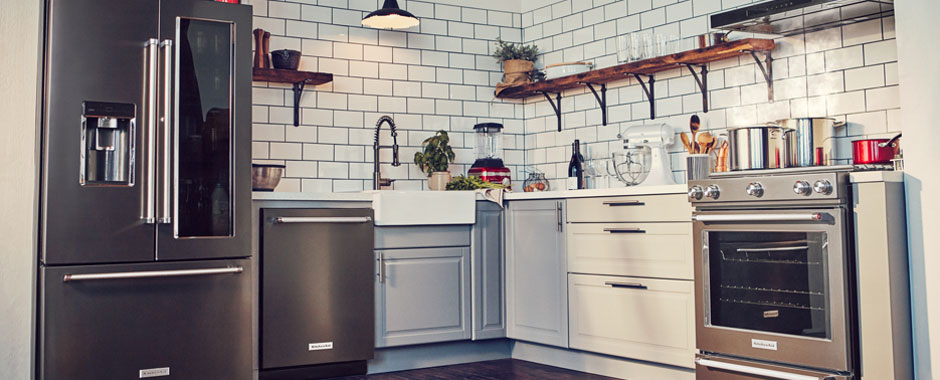
Types of Lighting
Layers of light contribute not only to the functionality of the kitchen but also to its design and beauty. The different types of lighting that are used to layer light are:
- Ambient
- Task
- Accent
Ambient Lighting
There is lighting that provides general illumination commonly referred to as ambient lighting, which can be sourced from the natural light coming in through windows, glass door panels and skylights, chandeliers, pendants, and recess and flush-mounted lighting. Ambient lighting is the main source of illumination for most rooms in a home. The goal of ambient lighting is to provide soft, general illumination without necessarily drawing attention to the light source. Ambient lighting provides enough light for safe navigation, cooking and washing dishes and helps to define the space.

Depending on the location of the kitchen and the number of windows and doors, ambient lighting can be sourced organically, from sunlight. Other potential sources of ambient lighting can be chandeliers, pendant lights, recessed lighting and flush-mounted lighting.
Task Lighting
Task lighting is employed to illuminate the activities that take place in the kitchen and provides light to prep, cook, bake, read recipes, easily find ingredients and spices, watch television or do homework. Recent technological advances enable designers to integrate task lighting into drawers and cabinets by installing LED strip lighting or puck lights. We often employ LED strip lights under cabinets to illuminate countertops.
Homeowners in Denver who are accomplished cooks and amateur chefs need to adequately light countertops and islands to properly illuminate those surfaces to make it easier and more enjoyable to prepare and cook meals for family and friends. In many of the kitchens we design for homeowners in Colorado, we specify a string of recessed lights, placed a couple of inches apart from one another to provide the task lighting needed for an island, over the range and cooktop, and above the sinks. Depending on the look and feel homeowners in the Colorado Front Range want to achieve in their new dream kitchen, we often specify pendants or other types of ceiling-mounted fixtures to provide task lighting for countertops, islands, sinks, and cooktops.
Accent Lighting
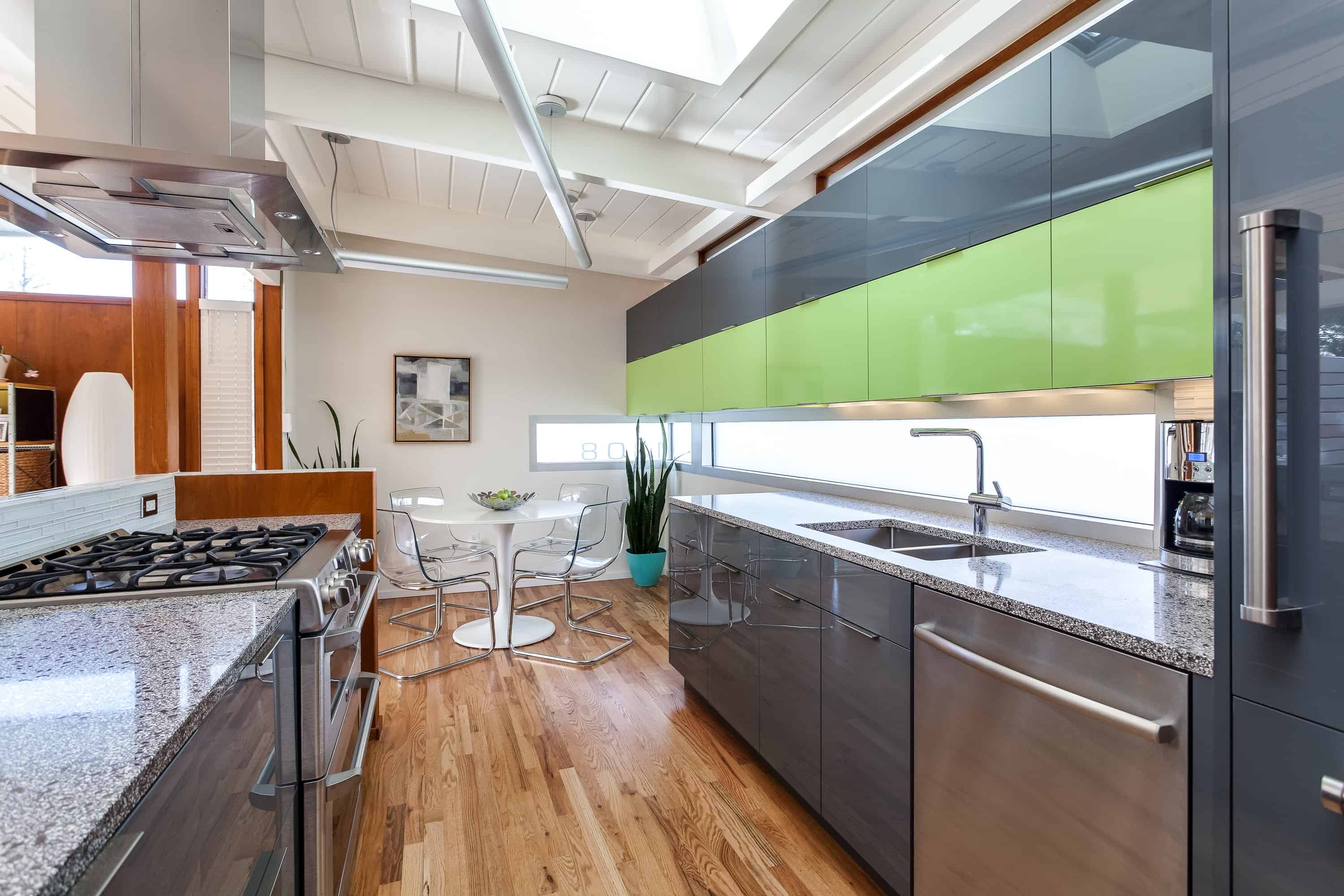
Another lighting tool that helps to illuminate spaces and areas in kitchens that can’t be reached by ceiling lights, commonly referred to as accent lighting, is to specify under-cabinet and in-cabinet lighting with sufficient output to adequately illuminate the space.
Accent lighting is used to help keep the kitchen from looking ordinary or bland by highlighting opening shelving, artwork, architectural details or other objects. A detail or work of art that draws the attention of the eye is referred to as a focal point. Light fixtures that provide light and shadows can make the space more inviting and comfortable. These may include track lights, recessed adjustable fixtures, and spotlights. Accent lighting is subtle. A focused beam of light directed at a plant or highlighting a work of art, or a spotlight placed behind a plant and pointed upward through the leaves creates shadows on the wall that can make a kitchen more attractive and appealing.
Lighting Controls
We almost always recommend lighting controls such as dimmers and motion detectors as part of a lighting plan because they not only are greener but they also help to control utility costs and enable you to alter the look and feel of the room.
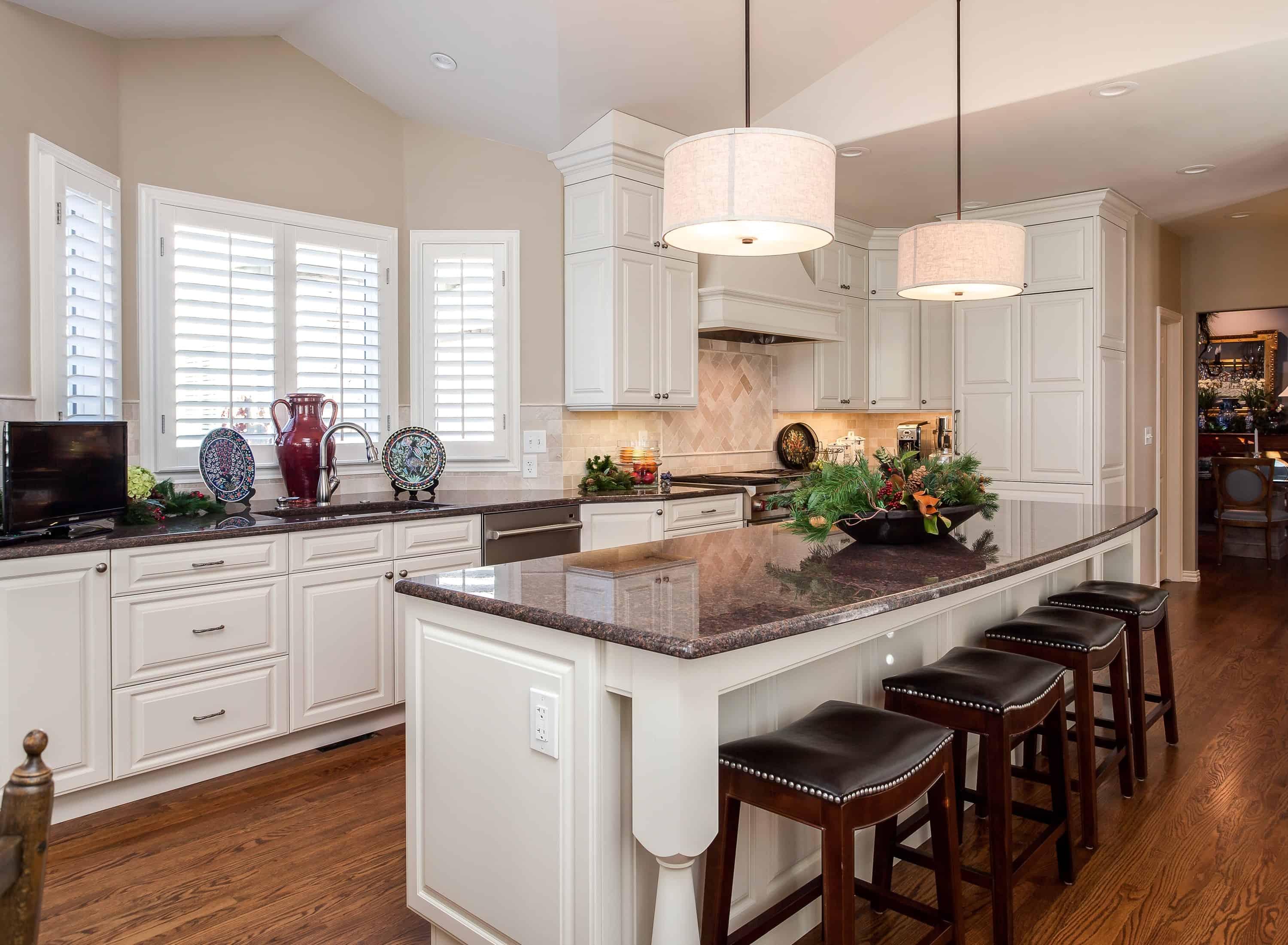
A kitchen lighting design is successful when all three types of light are layered together within a room to create a fully usable, adaptive space. Good lighting does not draw attention to itself but highlights the other design elements and fixtures in the space. Different light layers may be activated depending on the purpose or time of day. For example, during the day, pendants over the island may not be needed at all, but when you start to prepare dinner in the evening all the layers providing ambient, task, and accent lighting becomes necessary.
The visual appearance of the kitchen & dining room should be special!
That’s why so many of your neighbors rely on our showrooms. Our design professionals have the experience and knowledge to help create special spaces in your home and none should be more special than your kitchen. We always ask our customers how they want their kitchen to feel when the renovation is completed. At times, this question is received with a puzzled look. We explain that understanding the feel that our clients want to achieve helps us to recommend the materials, fixtures, cabinets, and lighting that will achieve our clients’ goals. Some clients want a feeling of expansiveness while others may want to create a feeling of intimacy, romance, artistic, efficiency or something else.

Lighting is critical to the successful outcome of a renovation, but too often lighting is an afterthought or it is left to subcontractors whose knowledge of lighting may be limited to installation only. Without the proper light, you compromise the entire project. Poorly designed and installed lighting can make your new kitchen look drab or create shadows on work surfaces. Lighting can help make smaller spaces appear larger by focusing lights to brighten vertical surfaces. Ambient light on ceilings promotes spaciousness and volume and can draw attention to architectural details such as exposed beams.
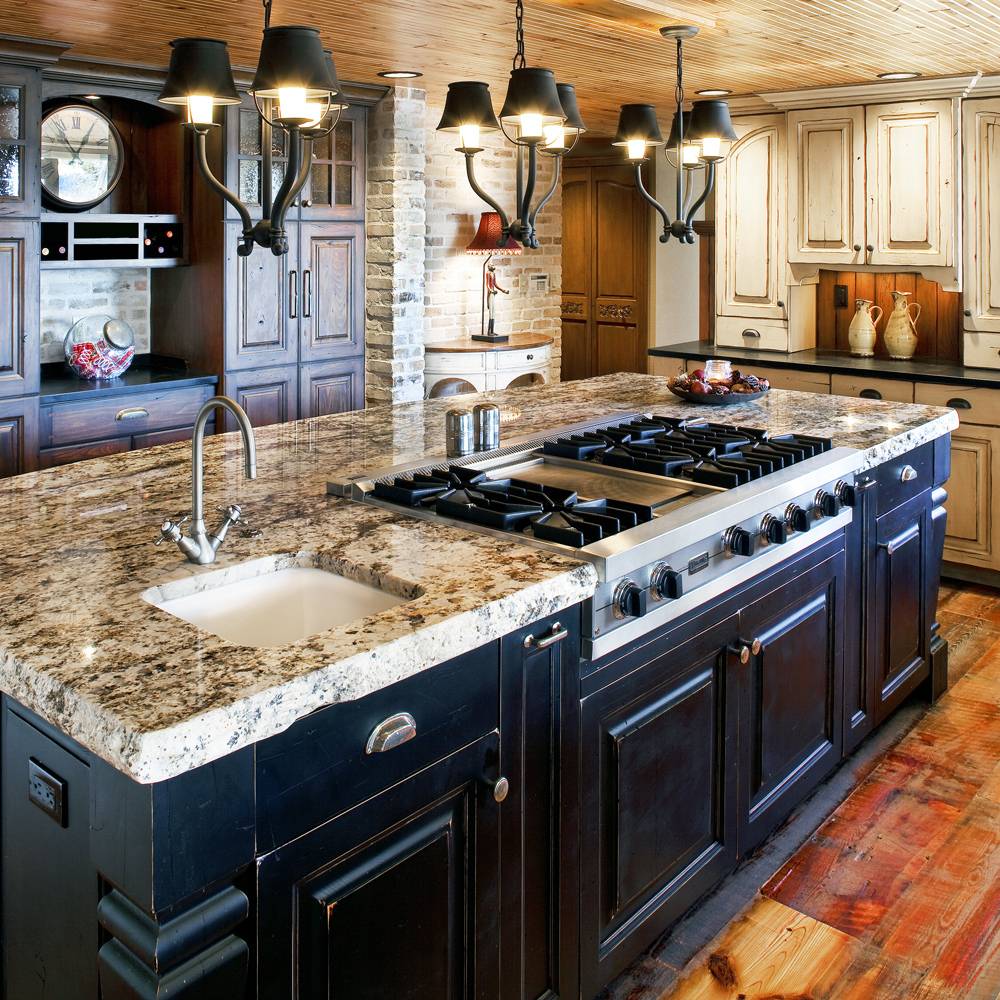
If our customer states that she really likes to make romantic dinners, we most likely will recommend fixtures that are dimmer controlled. If our customer has selected a beautiful stone countertop for the island, we may recommend a beautiful chandelier with dimmers or downlights with statement-making pendants.
Some of our customers make late-night visits to the kitchen for a midnight snack. Occupancy sensors that turn lights on at levels that allow for easy and safe navigation but are not bright enough to spread light throughout the home or possibly wake the dog best serve these customers.
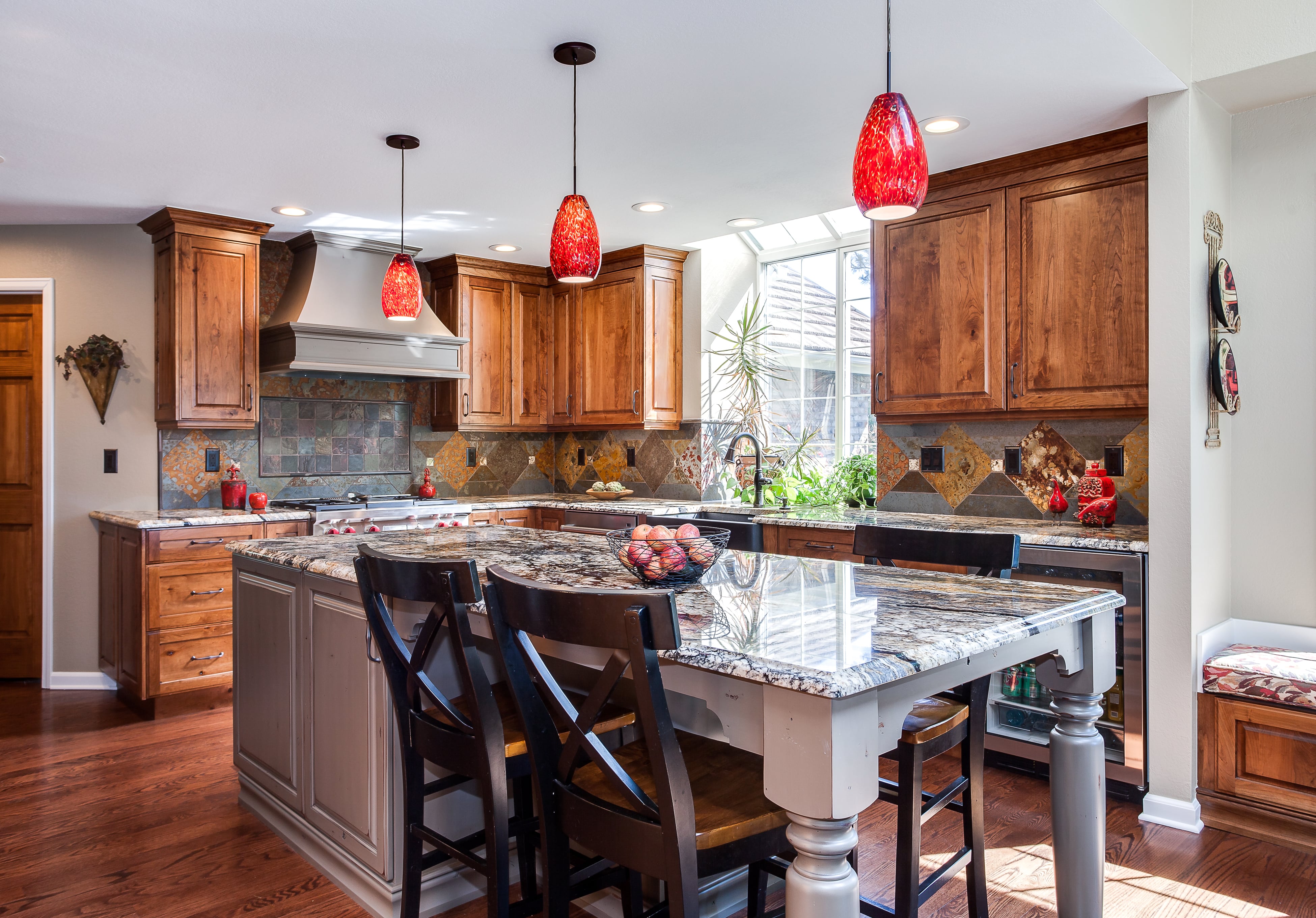
The look and feel of the kitchen also will be influenced by the colors used for floor and wall coverings, countertops, cabinets, sinks and plumbing fixtures. If a customer chooses a light color scheme, we know that light will bounce around more than if a dark color is selected. Dark colors absorb light. Smooth, shiny materials will reflect more light than textured matte surfaces. Polished stone will reflect more light than honed black slate. More light will be needed in a space with dark and textured finishes.
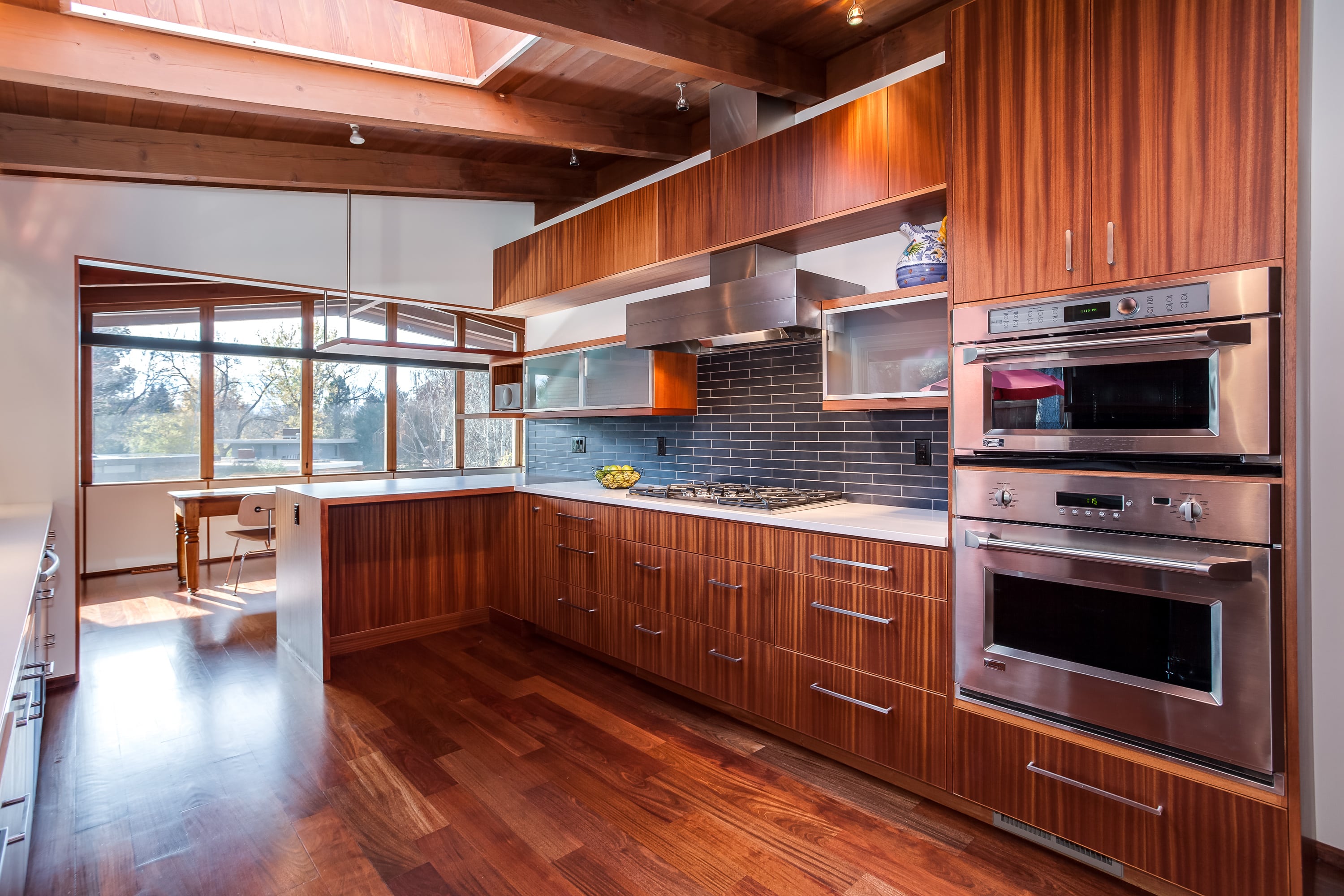
Natural Lighting Considerations
The type and amount of light that you need for your new kitchen also will be dictated by the size of the space and the amount of daylight that the room receives from windows, doors and/or skylights. Electric light fixtures complement the light generated by Mother Nature. Mother Nature can be fickle, however. Clouds, rainstorms, and other weather conditions can minimize the amount of daylight that enters the space. The possibility that the sun won’t shine brightly during the day needs to be accounted for in the lighting plan.
Generally, electric lighting supplements or replaces daylight, but man-made light can’t match daylight’s intensity or color distribution. Exposed lamps tend to look warm or even yellow compared to sunlight coming into the space through glass doors or windows. Recessed lighting may be a good option to create a color palette that works in the space.
Ambient lighting can also be provided by pendants or surface-mounted fixtures installed around the perimeter in a cove. Pendants can deliver light upwards or downwards or in a combination of uplight and downlight. Pendant options are almost limitless and a great way to influence the look of the kitchen.
What’s the right lighting for your kitchen remodel?
That depends on how you want your kitchen to feel. Let us use our knowledge of lighting to help achieve your goals and exceed your expectations. Give us a call, we would be happy to demonstrate how good lighting enhances a kitchen renovation and the perils that inadequate lighting can have on your remodel.

